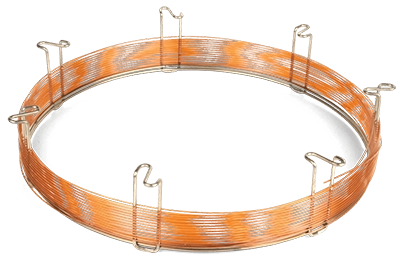GC with Flame Ionization Detector (FID): Applications and Considerations
August 5, 2025
Author: Duilio Romanello
Gas Chromatography coupled with flame ionization detection (GC-FID) is a widely used analytical technique for detecting and quantifying volatile and semivolatiles organic compounds (VOCs, SVOC’s). GC-FID plays a crucial role in various industries, including environmental monitoring, petrochemical analysis, pharmaceuticals, clinical, food safety and food quality.
Gas chromatographs coupled with flame ionization detectors are especially valuable for quantifying volatile amines and residual solvents in pharmaceutics, analyzing lipids and determining sugar derivatives or determining hydrocarbons in water and solid waste or in petrochemical products. Its simplicity and reliability make it a go-to method for routine analysis across various fields.
Why is FID Used?
The flame ionization detector is a common and highly sensitive detector for gas chromatography, valued for its simple design, stability, fast response, and low maintenance requirements. Its low detection limits, reliability, and broad dynamic range make it a preferred choice across various industries. While FID can detect almost any organic compound with high sensitivity, it has limited response to inorganic substances, inert gases, and dissociated compounds.
The working principle of the GC flame ionization detectors is simple:the analytes eluting from the column are burned in a hydrogen/air flame(requiring external supplies of H₂ and compressed air). This combustion process produces ions, which are collected by electrodes to generate a current that serves as the detector signal. The hydrocarbon backbone of the analytes when passing in the flame undergoes reactions in the reducing zone, forming carbon-hydrogen (CH) radicals that further produce formyl cations and free electrons for detection.
Considerations When Using FID
When utilizing a flame ionization detector (FID) in gas chromatography, several factors must be considered to ensure accurate and reliable results:
- Carrier Gas Selection – Since hydrogen is commonly used as the fuel gas, usually nitrogen or helium are used as the carrier gas. The choice affects sensitivity and baseline stability.
- Flame Stability – A stable flame, maintained by a proper balance of hydrogen, air, and carrier gas, is essential for consistent signal output. Any fluctuations can lead to erratic readings.
- Sample Composition – FID is highly sensitive to hydrocarbons but has limited response to inorganic compounds, permanent gases, and oxygenated species like CO₂. Understanding sample composition helps in method selection.
- Column Selection – The choice of GC column (e.g., stationary phase and dimensions) influences peak resolution, retention time, and overall separation efficiency.
- Baseline Noise and Contamination – Impurities in gases or residual contamination in the column can affect detector performance. Using high-purity gases, gas filters and regular system maintenance minimizes baseline noise.
- Maintenance and Calibration – Regular cleaning of the jet, regular replacing gas filters, and calibrating the detector with known standards ensure accurate and reproducible measurements.
- Temperature Control – Maintaining proper detector and column oven temperatures optimizes peak separation and prevents excessive baseline drift.
GC-FID vs. GC-MS – What are the differences?
GC is often paired with FID as it is simple to use but provides limited compound identification based on retention indexes and peaks areas.Gas chromatography-mass spectroscopy (GC-MS) is required for more accurate identification. Some of the differences between the GC-FID analysis and GC-MS analysis are listed below:
- GC-FID might provide identification through a comparison with a reference standard, while GC-MS uses electron impact fragmentation to enable compound identification through extensive libraries.
- GC-FID generates a signal related to the presence of a hydrocarbon backbone into an analyte, while GC-MS provides detailed molecular information by analyzing the mass-to-charge (m/z) ratio of the molecular ions and in some cases of the fragments.
- FID lacks specificity as it can detect any organic compounds. In contrast, MS can identify and differentiate similar compounds detecting their MS fragmentation patterns.
- GC flame ionization detectors are used to mainly analyze known substances like solvents or fatty acids or hydrocarbons in complex matrices like food or other while GC-MS is used for example to analyze unknown substances in drug or pesticide screening in clinical and forensic science and in food safety testing.
Frequently Asked Questions
What is the detection limit of FID?
The detection limit of FID is typically in the range of 0.1 to 10 ppm. However, this can vary depending on the specific compounds being analyzed and the experimental setup.. It is highly sensitive to organic compounds with C-H bonds but does not detect non-hydrocarbon species like water or CO₂. This makes FID ideal for analyzing trace levels of hydrocarbons in complex mixtures.
How often should the FID jet be cleaned?
The FID jet should typically be cleaned every few weeks or as needed, depending on the sample type and frequency of use. Frequent analysis of dirty or high-matrix samples may require more frequent cleaning to prevent blockages and maintain sensitivity. Regular maintenance schedules should be adjusted based on performance indicators like noise, baseline drift, or reduced sensitivity.















